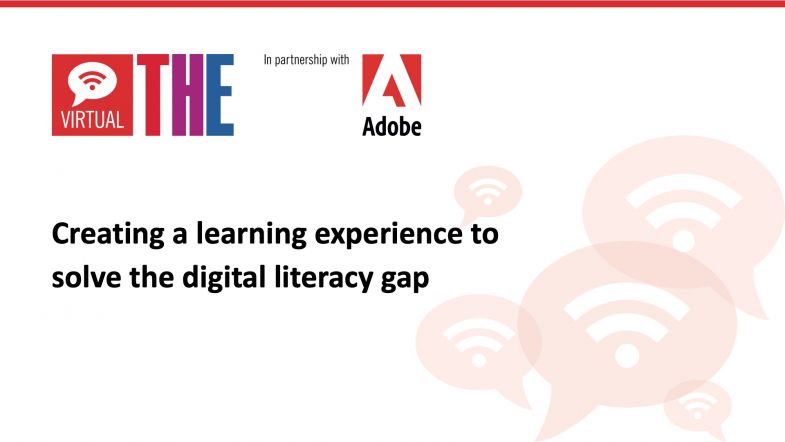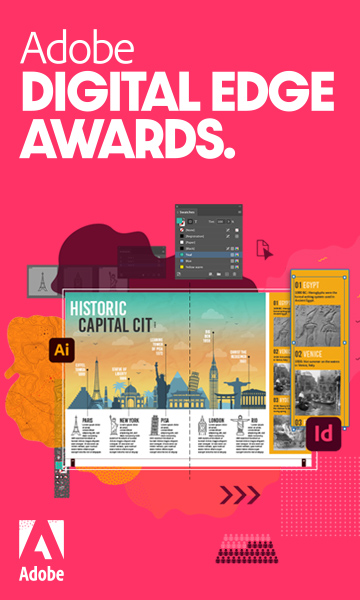
How digital and physical spaces can affect digital accessibility for learners
The Covid-19 pandemic has highlighted gaps in student accessibility, warn experts from the World Economic Forum to the OECD. But the forced re-evaluation of university spaces can provide new opportunities for inclusivity, too.
At a roundtable discussion held in partnership between Times Higher Education and Adobe, university representatives from across the UK and Ireland met to discuss these challenges and the solutions they had found.
Opening the session, Mark Andrews, a pedagogical evangelist at Adobe, noted that having a digitally literate workforce has become dramatically more important to organisations. Digital literacy, Andrews said, is “about mastering ideas, utilising technology to create something new”. The ability to think creatively will be increasingly valuable for graduates entering the workplace in the future.
Having the right digital tools in place to encourage creativity was crucial for “resilient pedagogy”, Andrews said. Adobe’s Creative Cloud, for example, allows students to “create artefacts that help to communicate their learning”, as well as helping “future-proof their learning behaviours” by encouraging students to develop as independent, active learners.
Emily Mcintosh, director of learning, teaching and student experience at Middlesex University, said that despite the challenges presented by Covid-19, the emergency shift to remote learning provided a unique learning opportunity: “I've been really inspired by some of the creativity I've seen over the last 12 months – our students are starting to use tools that perhaps they wouldn't have done before.”
Julie McLeod, pro vice-chancellor (learning and teaching) at Birmingham City University, agreed that placing all learning content online “massively increased the ability of our learners to engage”.
A new challenge her institution had been working to address, she added, was building students’ employability skills remotely. A “360-degree CV” workshop programme helped prepare students to gain employment in today’s climate, teaching them, for example, how to succeed in video-based interviews and to avoid common mistakes, for instance, “keeping eyes to the cameras and not to your own box”.
Middlesex University, meanwhile, established a “digital buddy scheme” whereby current students were trained on digital platforms by experts and then partnered with teaching staff. Seeing students and academics learning alongside each other was “a triumph”, said Mcintosh. It helped “establish a sense of belonging and confidence [among] students”, she added.
The changing purpose of physical spaces was another major thread of conversation during the session. A number of institutions have used the pandemic to re-evaluate the requirements of their libraries. At Liverpool John Moores University, a new, book-free library building was completed this year. It was designed to “support the digital agenda” first, said Heather Thrift, director of library services at the university.
Analysis of which students used library spaces during the months they were open last year found that more than half came under the umbrella of widening participation needs, highlighting a different kind of accessibility gap, Thrift said: “When we talk about digital poverty, we are not necessarily talking about access to technology…Giving students a laptop is the easy thing to resolve, but access to decent broadband or to a space to learn in…That [addresses] real digital poverty.”
David FitzPatrick, president of Technological University Dublin, agreed that “the majority of library users are people coming from socio-economic difficulties and who typically would have been under the radar”.
Additionally, Covid “really exposed the digital deficit” among academic staff, FitzPatrick said, which “creates huge demands in our training and development and the availability of appropriate technologies”. New spaces, therefore, “have to be configurable for the learning community but also for academics to put in place their pedagogical approaches as effectively as possible”, he said.
Wyn Morgan, former vice-president for education at the University of Sheffield, noted the way staff have adapted to new technologies: “We’ve seen a remarkable shift in use of tools – enterprise tools and more bespoke tools that were always available but were just somehow not part of the armoury for many of my colleagues.”
Encouraging “digital curiosity” was key to creating a positive remote learning environment, Thrift suggested. “For too long we have assumed students are tech-savvy…but they need the space to be curious about how technology can impact their learning, and how that enhancement of their learning can then translate into the workplace,” she said.
Moving beyond the pandemic, the panel concluded that strategic thinking and planning will be required in order to ensure physical learning spaces are not only used effectively but are also made inclusive and accessible to all. Incorporating the right digital tools within teaching and learning practices can keep learning practices flexible on and away from campus – and ultimately build up confidence among graduates as they enter the workplace.
The panel:
- Mark Andrews, pedagogical evangelist, Adobe
- David FitzPatrick, president, Technological University Dublin
- Anastasia Konstantopoulou, dean of teaching and learning, Edge Hill University
- Nona McDuff, pro vice-chancellor of students and teaching, Solent University, Southampton
- Emily Mcintosh, director of learning, teaching and student experience, Middlesex University
- Julie Mcleod, pro vice-chancellor for learning and teaching, Birmingham City University
- Wyn Morgan, former vice-president for education, the University of Sheffield
- Nick Petford, vice-chancellor, the University of Northampton
- Heather Thrift, director of library services, Liverpool John Moores University
- Andrew Turner, associate pro vice-chancellor for teaching and learning, Coventry University
- Ashton Wenborn, special projects deputy editor, Times Higher Education (chair)
Find out more about Adobe’s solutions for higher education.


























